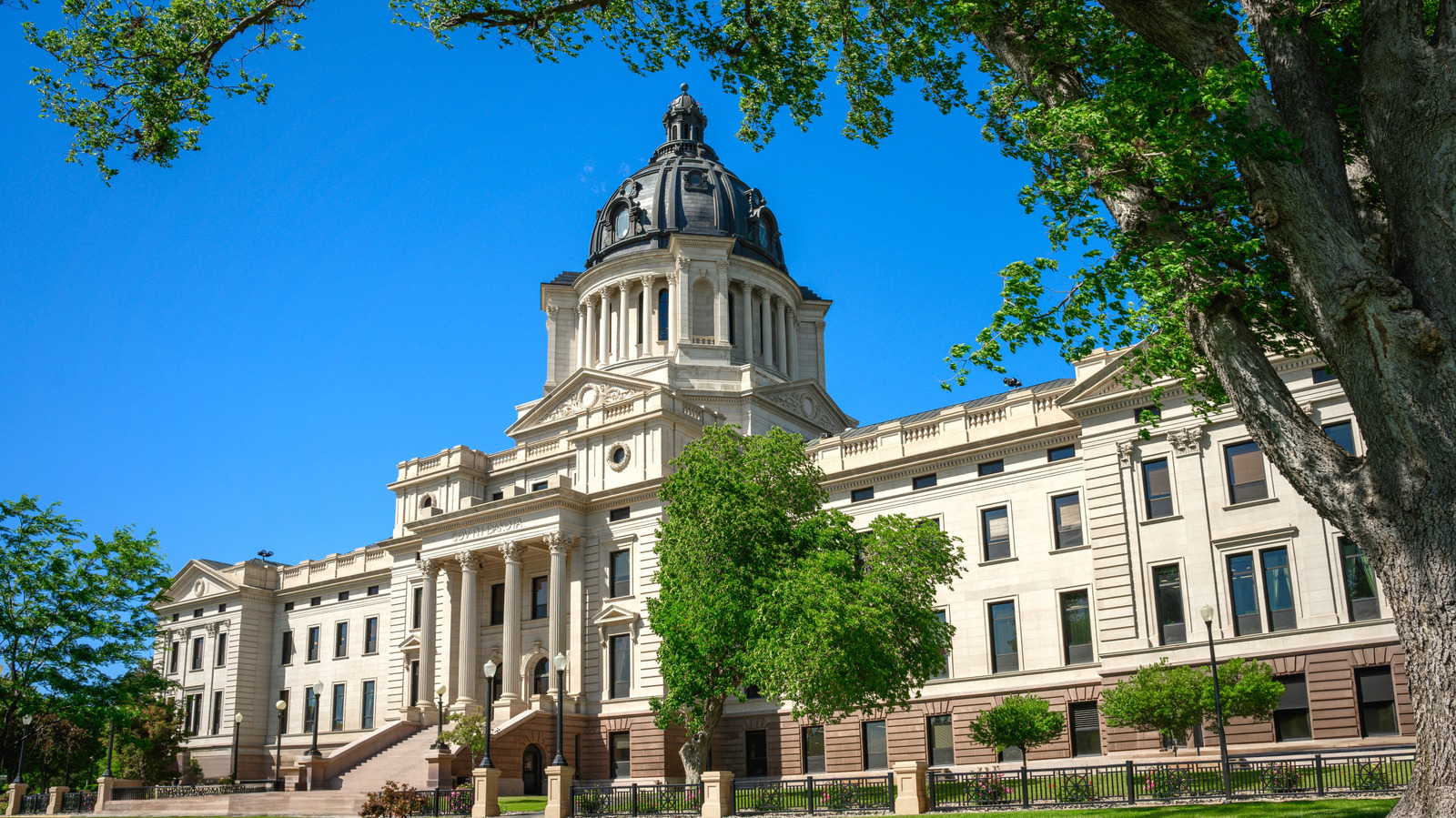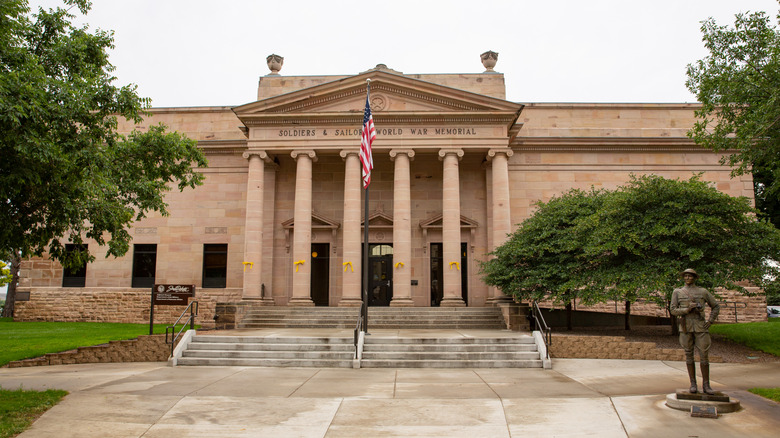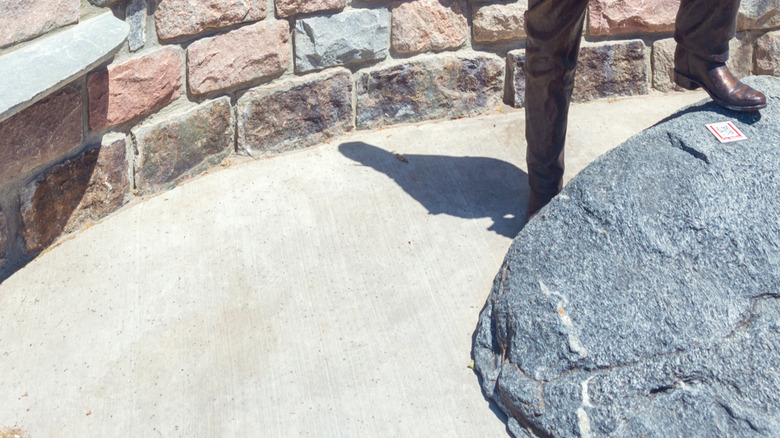South Dakota
South Dakota needs more teachers. Here’s why it’s not as easy as just hiring more.
Editor’s note: This is the first article in a five-part series, exploring South Dakota’s teacher shortage and the myriad of ways school districts, colleges and the state are attempting to solve that shortage.
There’s a teacher shortage in Sioux Falls, in South Dakota and across the nation.
But, none of this is “new news,” Becky Dorman, the human resources director for the Sioux Falls School District, said at a September Downtown Sioux Falls Rotary meeting. The shortage was exacerbated by the pandemic, by politics and by workforce trends of fewer people going into the service industry, Dorman said.
Peak teacher job openings have increased by 200 over the last five years. Compared with the rest of the nation, South Dakota falls in the middle of states experiencing teacher shortages, according to a USA TODAY data analysis of teacher-student ratios to identify potential shortages.
The pandemic, for example, gave people an opportunity to reexamine what they were interested in doing, she said.
“I do think we are seeing educators looking at other opportunities, because right now, there are just so many opportunities for employment, even here in Sioux Falls,” Dorman told the Argus Leader on Sept. 26. “Who wouldn’t want to hire a teacher? They’re intelligent, organized and well-spoken.”
More: Board meets to discuss solutions for lagging teacher pay, looming teacher shortage
Teaching is hard, and the profession can take a lot from a teacher in the nine to 10 months they spend in the classroom each year, including working long hours, creating lesson plans and curriculum maps, working with student behavior issues and working with parents, said Anna Schwan, interim dean and associate professor in the Millicent Atkins School of Education at Northern State University.
Is there a teacher shortage in South Dakota? Here’s what the data tells us.
During the 2022-2023 school year, about 175 teacher vacancies went unfilled across the state of South Dakota.
That forced districts to get creative with staffing. In Sioux Falls, for example, the district moved some instructional coaches back into classrooms and supported teachers seeking alternative certifications. In Brandon Valley this year, the district has had to delay hiring of some positions and let some vacant positions go unfilled.
We can’t count how many teacher positions went unfilled at this point in the school year since more people could be hired before school ends in May 2024, but we do have historical data showing how many teaching positions have been listed in the Associated School Boards of South Dakota Teacher Placement Center throughout recent years.
Teacher position listings usually peak between March and April. In the 2018-2019 and 2019-2020 school years, more than 300 postings were open at that time of year, while in the last three school years, more than 500 positions have been open at that time of year.
More teachers are leaving the profession than in years past
Resignations also contribute to the shortage. In a school board work session Aug. 28, Dorman said 20% of the 131 teachers who resigned from the Sioux Falls School District last year left the profession altogether, which is a higher percentage than the district has seen so far.
More: As South Dakota’s new social studies standards pass, groups explore legal options
Education Secretary Joe Graves said in September that right now, teachers are leaving because of an increase in student behavior, as well as cultural effects from COVID-19, the judicial response to young offenders and compensation.
Before COVID-19, some teachers worked past their retirement date and stayed in the profession well after they could’ve retired, but when COVID-19 hit, teachers retired or retired early, said Amy Schweinle, Dean of the School of Education at the University of South Dakota.
“We had a lot of people leave all of a sudden, and we didn’t have enough people ready to enter into the profession,” Schweinle said. “Coupled with universities going virtual and fewer people going into college, both of those things led to a sudden shortage that had to be filled, and we just couldn’t do it.”
Teacher pay contributing to South Dakota’s shortage
Schwan and David De Jong, Dean of the College of Education at Dakota State University, said another issue contributing to the teacher shortage is low teacher pay.
South Dakota continues to rank last or near last in annual rankings from the National Education Association’s assessment of teacher salaries across the U.S. South Dakota ranked 49th in the nation in the latest NEA rankings from the 2021-2022 fiscal year.
Teaching requires a degree, which requires tuition and student loans. An undergraduate resident at one of the six public four-year universities in South Dakota pays about $16,810 a year for college, and ends up with an average of $28,218 in student loan debt upon graduation, according to the latest South Dakota Board of Regents factbook.
After that, teachers join the profession not making as much as other professionals who require the same kind of degree, De Jong and Schwan explained.
More: How do Sioux Falls teachers afford classroom supplies? Often, through grants and donations
Their assertion is backed up by data from Our Dakota Dreams which shows that the mid-range annual salary for a teacher is $38,600 to $51,400, compared to careers in other fields requiring a bachelor’s degree, such as a financial and investment analyst ($60,100 to $93,700), compliance manager and regulatory affairs manager ($73,300 to $128,000), or registered nurse ($51,600 to $70,000). Our Dakota Dreams also projects annual teacher openings at 878.
The state needs to continue looking at teacher compensation, Sioux Falls School District Superintendent Jane Stavem said in an Aug. 28 school board work session.
“You can’t be last or near last and expect that that’s going to continue to work over time,” Stavem said. “The (DOE) has been trying to help with that with certification and getting people to get certified so they can come and teach, but that’s treating a symptom. We have to get to the root of that.”
If you’re a teacher who has left the profession, we’d love to hear from you about why as we continue to report on this statewide issue. Email education reporter Morgan Matzen to reach out at mmatzen@argusleader.com.

South Dakota
Obituary for Seth Michal Fuhrmann at Kirk Funeral Home & Cremation Services

South Dakota
2 dead in fatal crash in South Dakota

SOUTH DAKOTA (KCAU) — Two people died in a two-vehicle crash early Sunday morning, just 8 miles outside of Canton, South Dakota.
According to a press release, a 52-year-old Ford Ranger driver was traveling northbound on SD Highway 11, at the same time as a 49-year-old driver of a Volkswagen was traveling south bound. Authorities said the Volkswagen drifted into the northbound lane, where they collided head-on.
The Ford entered the ditch onto its roof, while the other came to rest in the southbound lane.
Both drivers sustained fatal injuries. There is still an investigation ongoing. Meanwhile, the persons will not be named until family is notified.
South Dakota
South Dakota’s Charming State Capital Is A Cultural Gem With Compelling Museums And Historic Sites – Islands

South Dakota is known for its expansive farmland, national parks, prairies, and mountains with plentiful outdoor attractions, like the Black Hills’ enchanting scenery or the uncrowded green grass trails in Badlands National Park. But the state’s capital, Pierre, is an underrated gem not to be missed. With its rich history and culture, paired with small-town ease, it’s an unassumingly lovely place to spend time. Clocking in at a population of around 14,000, Pierre (pronounced “Peer”) is the second-smallest of all the U.S. state capitals, second only to Montpelier, Vermont. The result is that Pierre is a laidback and unusually tranquil metropolis that packs a delightful punch with museums, historical sites, and other cultural attractions.
Located in the center of the state, right on the Missouri River, Pierre is just off U.S. Route 83. Sometimes called the “Road to Nowhere” for its path through vast and largely rural landscapes, US-83 was at one time the only completely paved, direct route from Canada to Mexico, with visitors popping into Pierre along their journey. To arrive from the skies, you’ll fly into nearby Pierre Regional Airport, which is situated a mere three miles from the city center.
How to experience Pierre’s cultural history and museums
If you only have time for one excursion during your stay in Pierre, put the South Dakota Cultural Heritage Center at the top of your list. Inspired by traditional Native American building traditions of Sioux tribes in particular, this museum is literally built into a hillside. Its visually striking exterior is worth taking in before heading inside. Established in 1901, the center is a Smithsonian affiliate institution and receives support from the South Dakota Historical Society Foundation. With more than 33,000 artifacts — including Lakota quilts, political merch, pioneer and military relics, and more — visitors will find extensive historical exhibitions and info about South Dakota’s human history. Families with kids will enjoy participating in the History Explorers program, offered daily, which is a specialized educational experience that groups of all ages can enjoy together. Don’t skip a customary trip to the museum gift shop, where you’ll find jewelry, books, ceramics, and other handmade items to take home.
With more time on the docket, follow this up with an excursion to the Verendrye Museum in Fort Pierre. (Named for brothers Louis and Chevalier Verendrye, French explorers, the museum’s name is pronounced var-en-dree.) Fort Pierre, part of the Pierre micropolitan area, is a historic area — in fact, it’s the site of South Dakota’s oldest continuous settlement. With the Verendrye Museum’s engaging exhibits — including historically accurate home decor and clothing, fossils, photos, and even a country store — visitors can learn all about the area’s history in a charmingly accessible way. Nearby, also in Fort Pierre, make a pit stop at the Soldiers and Sailors War Memorial, a striking Neoclassical building that honors South Dakota’s military veterans.
Historic sites in Pierre, South Dakota
With so much intersecting history, Pierre is chock-full of compelling historical locations for avid history fans to visit. One of the most important sites to hit is Fischers Lilly Park. Today, the park is a campsite along the banks of the Missouri River, offering RV hookups, a boat ramp, bike trails, a playground, and a peaceful setting along the water. Even if you’re not camping there, it’s worth checking out the park and casting your mind back to 1804, when Lewis and Clark’s Corp of Discovery first met representatives of the Teton Lakota nation at this very spot. This tense meeting, which devolved into armed conflict due to the language barrier and differing goals between the two groups, was a key moment in Lewis and Clark’s westward expedition. Today, because of this legacy, the National Park Service has designated Fischers Lilly Park as a site on the Lewis and Clark National Historic Trail.
With more time to explore and a thirst for local history, you can also visit the Cedar Hill Cemetery, the resting place of the city’s early settlers. The Log Cabin Visitor Center is another great addition featuring a reconstructed log cabin with historic displays where you’ll read about Pierre’s frontier history. For those who want to continue exploring South Dakota’s fascinating history, the nearby twin cities of Chamberlain and Oacoma are an underrated paradise for art and outdoor fun, and home to the Akta Lakota Museum and Cultural Center. This makes for an ideal day trip at just under one hour and 20 minutes by car.
-

 Alaska6 days ago
Alaska6 days agoMore than 1,400 seeking shelter as hundreds wait to be evacuated after catastrophic Western Alaska storm, officials say
-

 World10 hours ago
World10 hours agoIsrael continues deadly Gaza truce breaches as US seeks to strengthen deal
-

 News10 hours ago
News10 hours agoTrump news at a glance: president can send national guard to Portland, for now
-

 Business8 hours ago
Business8 hours agoUnionized baristas want Olympics to drop Starbucks as its ‘official coffee partner’
-

 North Carolina1 week ago
North Carolina1 week agoGuide to NC State Fair 2025: Tickets, transportation, parking, new rides and special event days
-

 Politics8 hours ago
Politics8 hours agoTrump admin on pace to shatter deportation record by end of first year: ‘Just the beginning’
-

 World1 week ago
World1 week agoAlbanian judge killed in courtroom shooting amid growing anger over justice system reforms
-

 World6 days ago
World6 days agoWhat are NATO’s national caveats and why do they hinder fast response?























